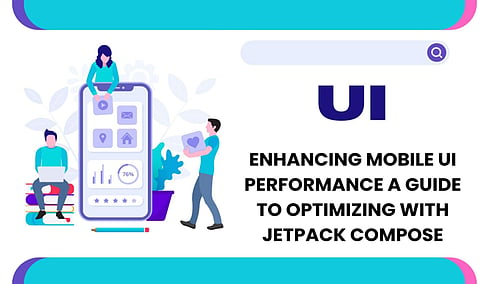

In this modern era, mobile app users expect fast, responsive, and seamless interfaces. Slow UI rendering is a major concern for developers, as research shows that users often abandon apps that take longer than three seconds to load. Shanu Sahadevan Mary explores how Jetpack Compose, a modern UI toolkit for Android, can be leveraged to enhance app performance, reduce memory usage, and provide a smoother user experience across various devices.
Jetpack Compose, Android's declarative UI toolkit, optimizes mobile UI performance up to 30% compared with traditional XML-based approaches. Among its key benefits is its sophisticated rendering engine, which optimizes initial rendering times. The Compose eliminates unnecessary UI updates, which also benefits mid-range and lower-end devices, where improved performance enhances engagement.
Recent benchmarks show that Compose applications achieve a 42% reduction in frame render times and a 35% decrease in memory usage during complex UI interactions. These improvements help apps run smoothly on devices with limited resources, reducing crashes and ensuring responsiveness during heavy usage. However, without proper implementation, Jetpack Compose can lead to increased memory usage and slower render times, particularly on devices with limited processing power.
Among the most performance-optimization-powerful features in Jetpack Compose are lazy layouts. Lazy rendering loads at any given time just the content which is visible on the screen. This minimizes the memory consumption and increases performance of your app. Memory consumes traditional list rendering, especially where the dataset can be huge in size. On the other hand, LazyColumn and LazyRow offer virtual scrolling in Jetpack Compose, loading only the visibly visible content on the screen.
According to studies, lazy layouts reduce memory usage by as much as 73% in cases where lists have thousands of items. Even with rich text and images in complex layouts, optimized lazy layouts maintain a memory footprint as low as 12MB. Lazy layouts also reduce initial load times by 41.2% while maintaining smooth frame rates of 60fps during list scrolling.
Memory management is critical to ensuring optimal app performance, especially when handling large datasets or dynamic content. Inefficient memory usage can cause performance degradation, particularly on devices with limited resources. Jetpack Compose helps reduce memory overhead by optimizing how memory is allocated and reused.
For example, implementing proper item recycling and caching mechanisms can reduce memory consumption by 52%. This allows apps to handle larger datasets while maintaining high performance. When working with large lists of over 5,000 items, optimized memory management ensures that apps perform well without exceeding memory limits, which is a common issue in data-heavy applications.
Animations are a core part of modern mobile UIs, but when not optimized, they can severely affect performance. Poorly implemented animations cause frame drops, increased CPU and GPU usage, and excessive battery drain. Jetpack Compose offers an optimized animation API that helps reduce power consumption while maintaining smooth transitions.
Studies reveal that the power consumption can go up to 27% during intricate interactions in complex UI, when the Jetpack Compose optimizes the animations. More so, animations done in Compose keep above 58fps while compared with the average rates for traditional animation of 45-52fps. In fact, keeping the GPU utilization under 65%, this helps while comparing to 85-95% for the case of non-optimized animations.
State management in Jetpack Compose plays a pivotal role in optimizing UI performance. Inefficient state handling can lead to unnecessary recompositions and increased CPU usage, which ultimately degrades performance. Compose’s state management APIs allow for efficient management of UI state, reducing the number of unnecessary updates and improving overall responsiveness.
Studies show that proper state management can reduce memory allocations by 58.6% and decrease garbage collection pauses from 124ms to 46ms. This efficiency is particularly crucial in data-intensive applications, where real-time updates or dynamic content can otherwise slow down the UI. By using proper state hoisting techniques and isolating state changes, developers can maintain smooth UI updates without overburdening system resources.
In a nutshell, Shanu Sahadevan Mary states that lazy layouts, memory optimizations, efficient animations, and more advanced state management can greatly enhance app performance. But, to keep it performing efficiently, the app needs to be tested and its performance monitored frequently as the app evolves.
It ensures performance profiling framework by identifying bottlenecks of potential UI. Moreover, there would be minimal chances of memory leak and would not let inconsistent frame rates at a given point of time, ensuring seamless application runtimes on devices with varied screen size. Staying updated on latest techniques and implementing it will assist in building more proficient Android applications which provide superior end-user experience.
